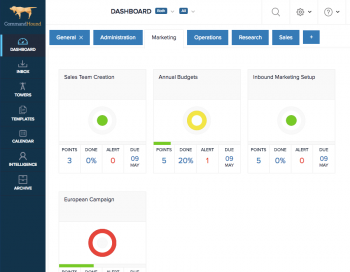In the wake of the UK Parliament’s recent network security attack, it’s clear that no matter how well-designed our IT security systems and internal controls are, there’s always a risk of your organization falling victim to a cyber threat.
Insights: Accountability
Deciding to implement a comprehensive information security framework like ISO 27001 or COBIT is not a trivial thing. These frameworks are comprehensive, cross-functional, broad reaching, and culture-changing. Here are 3 compliance software tools to help you through the process.
CommandHound power users follow a predictable path towards the institutionalization of a culture of accountability in the workplace. Here is a quick Infographic that shows you the typical path they follow.
Why do some of your employees get all tasks done on time and as expected, but others can’t seem to have the same success rate, even when those tasks are critical and are designed to avoid, transfer, or reduce risks to the business?
Is it their motivation? Their DNA? Is it compensation? Is it culture?
The latest data out from the Bureau of Labor Statistics shows that the unemployment rate is at it’s lowest point since the recession and that the labor market is verging on full capacity.
While this is good news for the US economy, it means that you, as an employer, cannot afford to lose even one valuable employee. Turnover is expensive.
Setting up a project management office is one the most effective things you can do to manage multiple projects around your organization. But it could become a big waste of time and resources if not configured properly.
The mission of the International Esperanza Project (IEP) is to inspire hope in people in developing countries through healthcare and community development projects. They have selected CommandHound to provide the task management and accountability support they need to maximize their resources.
Holding people accountable in the workplace requires a full closed feedback loop to be really effective. If we are able to track actual results as people complete their assigned tasks, do you think they will be more inclined to make sure things get done?
A partner in a law firm has a lot to worry about. Business development, client relations, case management, and ensuring high quality work to mitigate the risk of malpractice leave little time for training and mentoring young associates.
Most firms have more work than they can handle, and that work can’t be done without people. It is no secret that retaining associates is one of the biggest challenges facing law firms.
Why do most employees see training as a chore of little value? Why is it that training is so hard to make interesting and engaging? Why is knowledge retention so hard to achieve?







